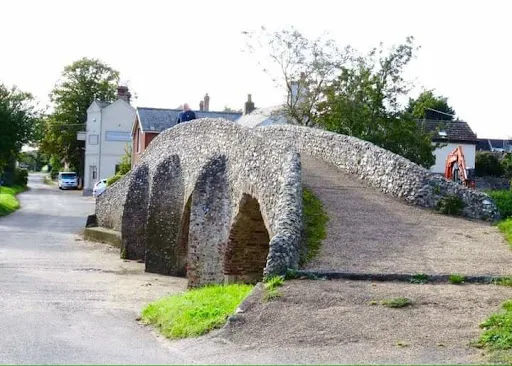Medieval History, but we love other eras too
When a king looks straight at you. On this day in 1485, on a battlefield in Leicestershire the death of a Plantagenet King. A York! A York!
The old post office in the Dorset town of Lyme Regis has one of England’s oldest post boxes and it’s made of wood.
There are traces of our medieval past all around us, here is one in the Suffolk village of Moulton.
As you can see, it is a pretty four arched late medieval flint and rubble packhorse bridge that spans the River Kennett on an old route from Cambridge to Bury St Edmunds.
The month of August was originally named Sextilis because it was the sixth month in the original ten month Roman calendar. In 8 BC, it was renamed in honour of Emperor Augustus. Augustus chose this month because it was the time of several of his great triumphs, including the conquest of Egypt.
Here's poor Augustus (Brian Blessed) with his scheming wife Livia (Sian Phillips) in the BBC's series *I'Claudius.
*I may be bombarding my page with facts about Rome and its emperors over the next few weeks because I am just enjoying this series so much.
It was in the August of 1402, that John of Lancaster, the future Duke of Bedford, was appointed Master of the Falcons. Historically, falconry was a popular sport and status symbol and was still so in the 17th century, but its popularity would wane. The position of Master of the Hawks was abolished upon the accession of Queen Anne in 1702.
John of Lancaster was the son of Henry of Bolingbroke who had taken the throne in 1399. In the years following the coronation, the king's family were granted land and titles. John was knighted when Henry was crowned and made Knight of the Garter the following year.
Ladybird: Adventures from History Books: Series 561
This is the largest Ladybird series produced between 1940 and 1980 and was one of the more popular. The first 23 titles of the series, 19 of which were produced with dust-wrappers, were all written by L Du Garde Peach and illustrated by John Kenney.
How I loved them.
On the 20th of August 1913, stainless steel was first cast by Harry Brearley.
Brearley was born in Sheffield, a city that you may know is famous for its steel industry. Sheffield steelmakers along with Krupp of Germany were producing steel in 1850s and a patent was taken out in Britain in 1861, but it was Brearley, while he was employed by Brown-Firth research laboratory in Sheffield who discovered 'martensitic stainless steel alloy'
Today, stainless steel is used in architecture, art, chemical engineering, food and drink manufacture, vehicles, medicine, energy and weapons.






